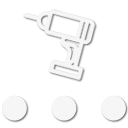
Creator III
So, you've had a long day on the trail, camp is set up, fire lit, food cooking, time to sort out the day's photos and blog.
I always start a trip with the best of intentions and promise myself I'll sort out photos daily or every couple of days. but it often goes to rat sh.t after the first beer or two, and I promise myself I'll do it tomorrow night, then it ends up being such a back log, it ends up waiting 'til I get home. - assuming I have enough memory cards to last 'til I get home. Then it seems to take for ever to find the time of an evening or two, or three .... to sit down and catch up on two, three, four weeks, or more, worth of photos.
I guess remaining disciplined about it is the best place to start - and I get someone in the party to be my reminder - keep nagging me to do it. If we're in a reasonably big group of people, it's sometime easier to keep under control as everyone has a job to do on arrival at camp site.
I always take a laptop and portable hard drive. Not just for photography, but mainly for storage and back up copies, and with two cameras and two Iphones, the number of shots per day can be quite a lot some days, depending on location and activity.
A good professional photographer friend of mine always suggests to take enough cards never to need to delete anything, and advocates that you don't have a safe back up scheme unless they're stored in three places:
While away: card/laptop/back up portable hard drive - he even psots a copy home if he's away for a long time.
Once home: network storage drives (on and off site) and an off site cloud storage
Possibly a bit OTT, but then he is a professional and his livelihood depends on his photos.
With potential for failure, loss, damage or theft, I guess he has a point
So, what photographywork flows do you have for downloading, sorting and saving all those photos?
On the trail - hence why Q here in Camp Q&A
On return home
I always start a trip with the best of intentions and promise myself I'll sort out photos daily or every couple of days. but it often goes to rat sh.t after the first beer or two, and I promise myself I'll do it tomorrow night, then it ends up being such a back log, it ends up waiting 'til I get home. - assuming I have enough memory cards to last 'til I get home. Then it seems to take for ever to find the time of an evening or two, or three .... to sit down and catch up on two, three, four weeks, or more, worth of photos.
I guess remaining disciplined about it is the best place to start - and I get someone in the party to be my reminder - keep nagging me to do it. If we're in a reasonably big group of people, it's sometime easier to keep under control as everyone has a job to do on arrival at camp site.
I always take a laptop and portable hard drive. Not just for photography, but mainly for storage and back up copies, and with two cameras and two Iphones, the number of shots per day can be quite a lot some days, depending on location and activity.
A good professional photographer friend of mine always suggests to take enough cards never to need to delete anything, and advocates that you don't have a safe back up scheme unless they're stored in three places:
While away: card/laptop/back up portable hard drive - he even psots a copy home if he's away for a long time.
Once home: network storage drives (on and off site) and an off site cloud storage
Possibly a bit OTT, but then he is a professional and his livelihood depends on his photos.
With potential for failure, loss, damage or theft, I guess he has a point
So, what photographywork flows do you have for downloading, sorting and saving all those photos?
On the trail - hence why Q here in Camp Q&A
On return home



